Construction dating from the twelfth/thirteenth century, in Romanesque style, that has been enlarged and renewed over the years up to its final setting, in the twentieth century, resulting in an idealized reconstitution of the medieval cathedral. Special mention goes to: the Gothic São João Evangelista Chapel and the cloister, from the fourteenth century; the enlargement of the main chapel, the Santíssimo Sacramento Chapel and its silver altar, from the eighteenth century (mannerist); the eighteenth century Baroque frescos in the main chapel and the sacristy, by Nicolau Nasoni, and the tiles in the cloister, by Vital Rifarto; the sculpture in the Baptism Chapel, by Teixeira Lopes (father) from the nineteenth century.
Day 1
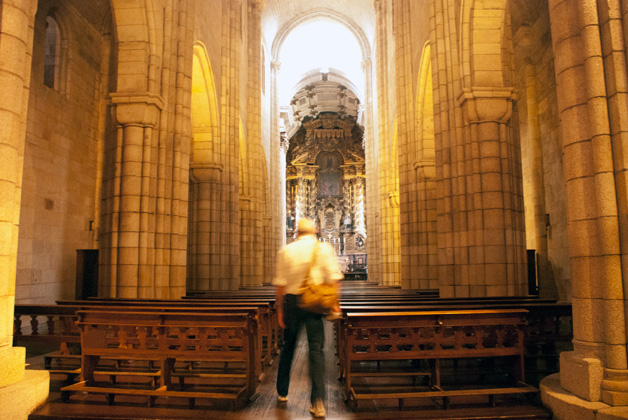
Cathedral
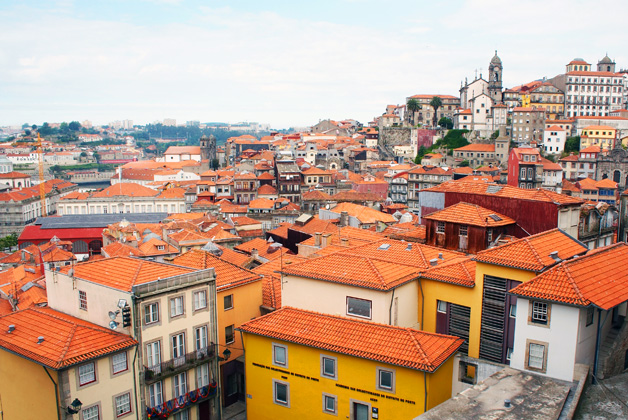
Terreiro da Sé
The Terreiro da Sé (square), framed by the buildings of the Cathedral, the Chapter House, the Bishop’s Palace and the former City Hall (Casa da Câmara), is the result of the recovery works that took place in 1940, through which several medieval quarters were demolished to give way to an open square, where a stone monument representing local government (pelourinho) was placed in 1945, by the Porto City Council. From this spot one can admire the complete Barredo area, the river Douro and Vila Nova de Gaia.
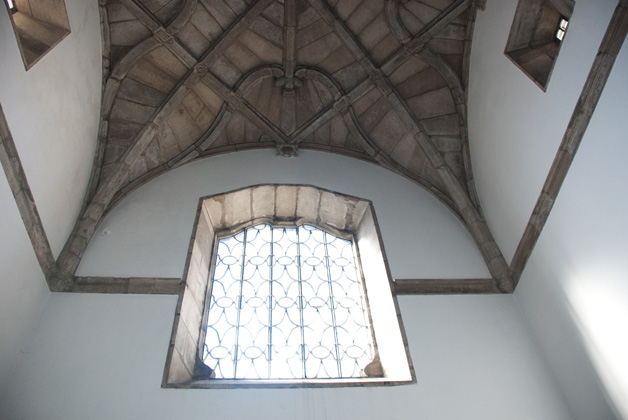
Chapel of Alfaiates or of Nossa Senhora de Agosto
Built in 1554, the chapel houses, on the outer façade, a clay image of Nossa Senhora de Agosto (Our Lady of August).
Designed and carried out by Manuel Luis, it marks the transition from late Gothic to the Flemish-inspired mannerism period.
At the center of the altarpiece of the main chapel is the limestone image of Our Lady of August. To the right of the High Altar, is the wooden image of S. Bom Homem (18th century), patron of the Tailors.
In 1935, due to the demolition works carried out in order to build the Cathedral Yard, the chapel was expropriated by the City Council and was rebuilt in 1953 in its current site. In 1927 it was declared a National Monument.
Cost
0 €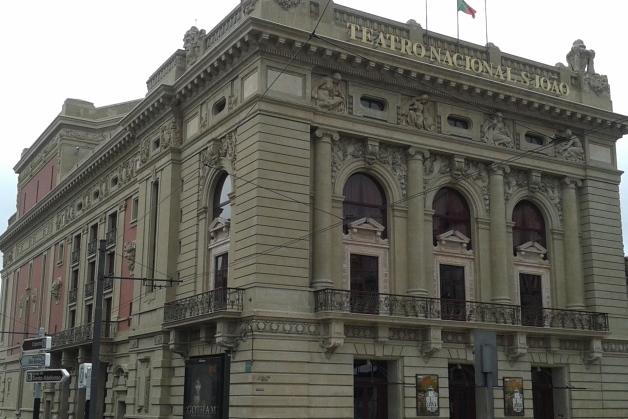
São João National Theatre
As part of the national effort to contain the novel coronavirus, Teatro Nacional São João, decided to suspend all its activities and plays until April 6th.
Teatro Nacional São João deeply regrets this situation, certain that the collective effort of the community will allow to overcome the challenge that this pandemic constitutes, in the expectation of a return to normality as soon as possible.
This classic building was constructed in 1910 on top of the ruins of the Real Theatre which burned down in 1908. With stylistic emblems representing pain, quality, hate and love. The main façade is inspired by its renovation in the style of Luís XVI, which is typical of the early years of the 20th Century, namely in France.
Designed by Marques da Silva, it is considered a building of public interest.
His main objectives were the creation and presentation of theatre shows, of various genres, and the encouragement of better public availability of specialist, classic and contemporary theatre works, spanning through the national and international drama repertoire.
As well as the National Theatre São João, head-office, the building connects the Carlos Alberto Theatre to the São Bento da Vitória monastery.
- Guided visits (PT/EN/ES/FR) Tue-Sat 12:30pm.
- Guided tours MSBV/Church (PT/EN/ES/FR) Mon-Sat 10:30am and 12:30am
- Schools: Mon-Fri, with prior appointment.
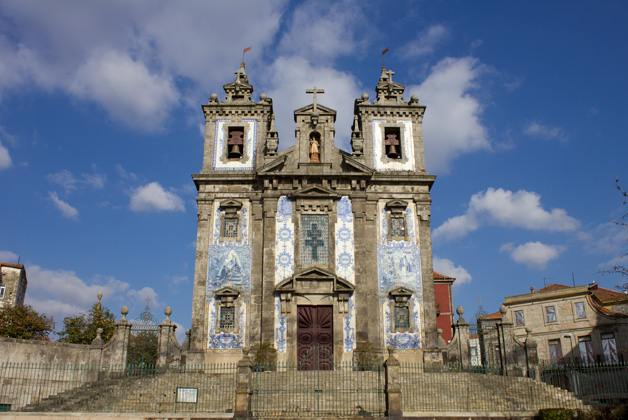
Church of Santo Ildefonso
The church was constructed between 1709 and 1739.
The façade is decorated with tiles by Jorge Colaço (1932), depicting scenes from the life of St. Ildefonso and allegories from the Eucharist.
Inside, there is a baroque and rococo retable from the first half of the eighteenth century planned by Nicolau Nasoni.
Cost
0 €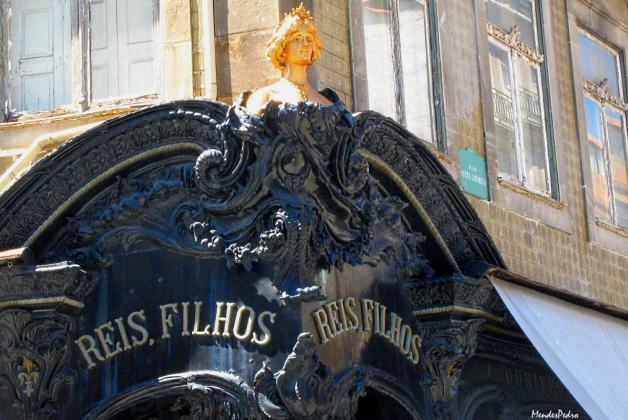
Ourivesaria Reis & Filhos
The jewellery Reis & Filhos was founded in 1880 by António Alves dos Reis. Still working as a shop, it is settled on the corner of Rua de Santa Catarina with Rua 31 de Janeiro and its main façade displays two deventures (shop front) made of cast iron and enrolled in the Nouveau Art movement, as confirmed by the elements that decorate the façade, namely the bust of a woman, upper end of the iron frame. These deventures were placed on the building in 1905 and were produced in Porto in the foundry Companhia Aliança.
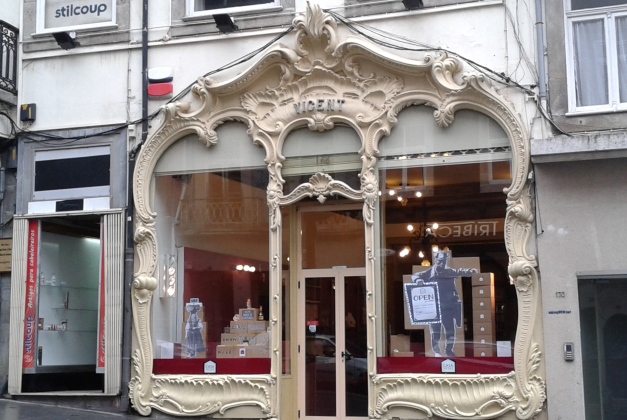
Casa Vicent
It was originally a jewellery, and then it was bought by a Spanish businessman who wrote his name on the main façade. The construction is thought to have begun in 1914, when documents refer to the supply of the iron for the front of the shop (deventure) by the Porto foundry Companhia Aliança. Clearly inspired by the Nouveau Art movement are the interior and the façade of the shop. The façade displays large curved frames on cast iron covering the front. These iron frames, originally golden, are decorated with shells, flowers and leaves, elements enrolled with the Nouveau Art vocabulary. On top, the name of the shop – Vicent. I tis now a restaurant.
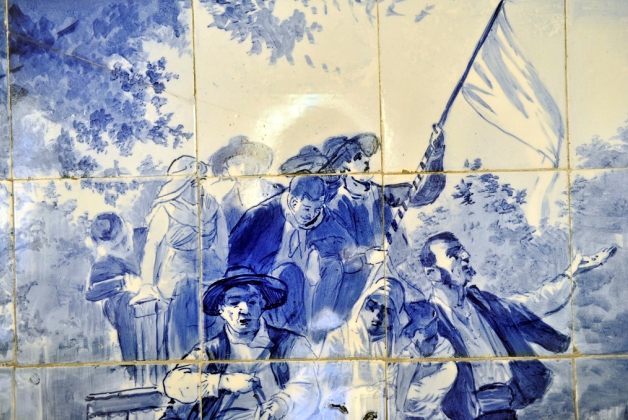
São Bento Railway Station
The S. Bento Railway Station was built at the beginning of the twentieth century on the exact location of the former Convent of S. Bento de Avé-Maria. The glass and iron structure was designed by the architect Marques da Silva. The vestibule is adorned with twenty thousand tiles painted by Jorge Colaço that illustrate the transport evolution and events of Portuguese history and life.
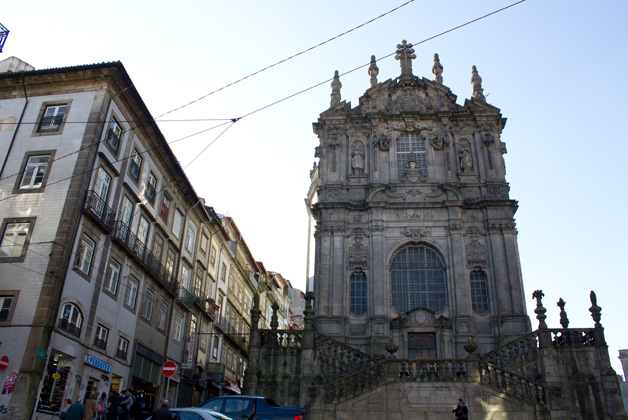
Church of Clérigos
Baroque church designed by Nicolau Nasoni during the first half of the eighteenth century, between 1732 and 1749.
Inside the church, there is an unusual elliptical nave decorated with carved wooden gold gilt in D. João V style.
The chapel altarpiece is noteworthy. It is of rococo style and made up of marbles of 4 different colours. Nasoni knew how to combine granite, marble and gilded woodwork to make the church dos Clérigos and the entire architectural complex one of the most beautiful baroque-style temples and a reference point in the history of the city of Porto. It is still used today for religious ceremonies and cultural events such as organ, orchestral and choral concerts.
The beautiful Clérigos Church opens its doors even wider to the world! Every Saturday at 5 pm, Clérigos Church will hold an entire Mass in English, giving the church a more universal dimension, where the language of faith is experienced, celebrated and understood by a greater number of people.
The Church also has its usual mass in Portuguese every Sunday at 9:30 pm.
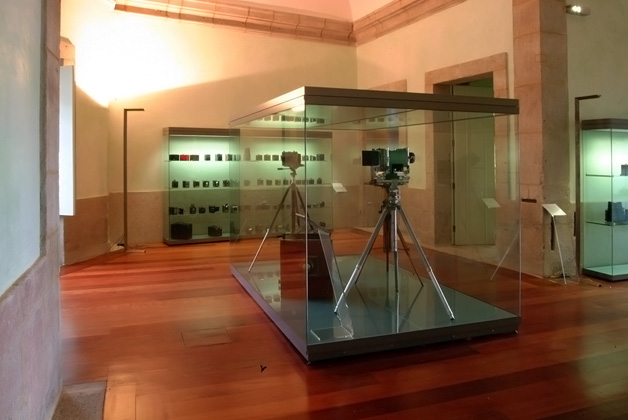
Building of the former Gaol and Court of Appeal
Granite building, dating from 1582, rebuilt in 1767 in neo-classical style, according to the design of the architect Eugénio dos Santos, by initiative of João de Almada e Melo and financed by Companhia Geral da Agrigultura das Vinhas do Alto Douro. It presents a geometric sequence of windows (103 on the whole). This polygonal-shaped building has 4 façades, two of which are related to its main functions: the main façade, on Rua de São Bento da Vitória, allows you to enter the Court sector. The other façade, opened to the Cordoaria Garden, was formerly constructed for the direct passage of prisoners and is currently the building’s main entrance.
Camilo Castelo Branco, who was one of Portugal's most famous writers and was charged with adultery as well as the famous Zé do Telhado who was charged with theft were kept here.
Between 1999 and 2002 the building was restored under the direction of Eduardo Souto de Moura and Humberto Vieira, to become the current Portuguese Centre for Photography, including an exhibition centre.
Guided visits to the building are available.
Included in the Urban Wine Route.
Cost
0 €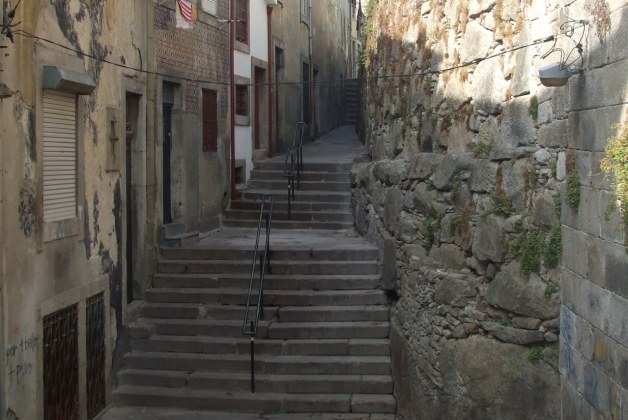
Escadas da Vitória
Located in the Vitória area, by the Church of Vitória, until very recently this staircase was known as “Escadas da Esnoga”, directly referring to the synagogue of the Olival Jewish Quarter (New Jewish quarter). This Jewish quarter was created with the king D. João I (fourteenth century), and was settled on Rua de S. Miguel where one can now find the building with nº 9. The stairway gave direct access to the Jewish temple, departing from Largo de São Domingos.
Cost
0 €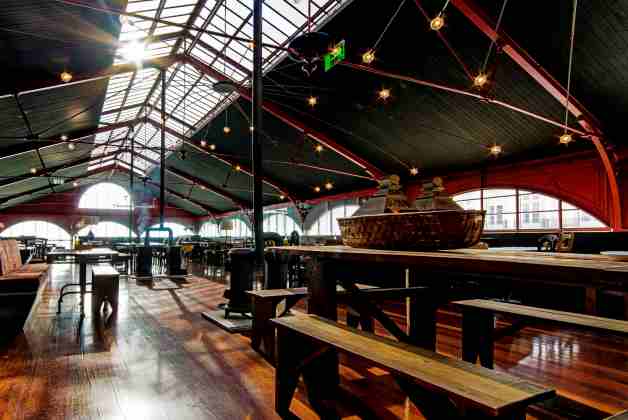
Ferreira Borges Market
This market was built in 1885, by order of the City Council, in order to replace the old Mercado da Ribeira (Ribeira Market).
It operated as a market for a very short period of time, having been used for various purposes. It represtents an important example of iron architecture in Porto, which was later renovated to become an entertainment venue, where Hard Club is now located.
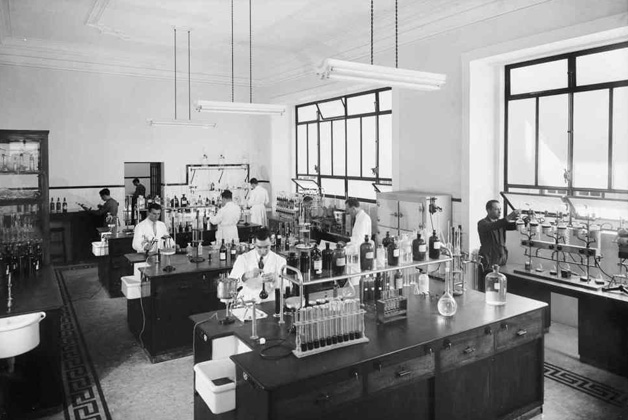
Port and Douro Wines Institute
The building where the IVDP is settled was built in 1843 to house Banco Comercial do Porto, in neo-classical style and it was bought by the IVDP in 1933.
IVDP’s visitor centre offers a shop selling wines, a tasting room and a tour that takes visitors through the certification process for Port and Douro wines.
Included in the Urban Wine Route.
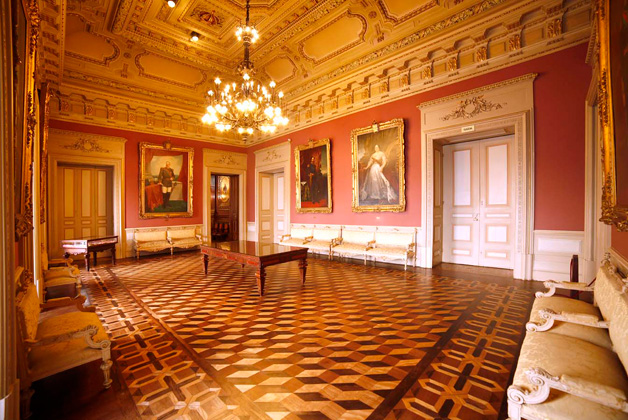
Palácio da Bolsa
The Jewel in the City, a unique building.
In the historic centre of Porto, World Heritage Site, Palácio da Bolsa or Stock Exchange Palace, is the city and region’s crowning jewel. The building is designated a national monument and is the headquarters of Associação Comercial do Porto. It was built in the second half of the 19th century.
Of neoclassical style, some of the biggest names in Portuguese architecture were involved in the different stages of its construction, including Marques da Silva and Tomas Soller. Painting and sculpture involved figures such as Veloso Salgado, Henrique Medina, Teixeira Lopes and Soares dos Reis.
Many famous personalities of the 19th, 20th and 21st centuries have graced Palácio da Bolsa. Monarchs, Presidents of the Republic, and numerous world leaders have all walked its hallways. The elegance and diversity of the interior also ensure that Palácio da Bolsa is one of the northern region’s most visited monument, with over 300,000 visitors every year.
Palácio da Bolsa is one of the most privileged venues for holding political, economic, cultural and social events - from ceremonies to conferences and exhibitions to concerts, congresses and parties. Providing excellent conditions, the Palace stages most of northern Portugal's official receptions and its many rooms mean that it is highly versatile and able to hold a wide range of events.
Accessible for people with reduced mobility through a side entrance.
Closed: March 28th to April 4th / December 25th / January 1st
December 24th and 31st closed at 1pm
Cost
10 €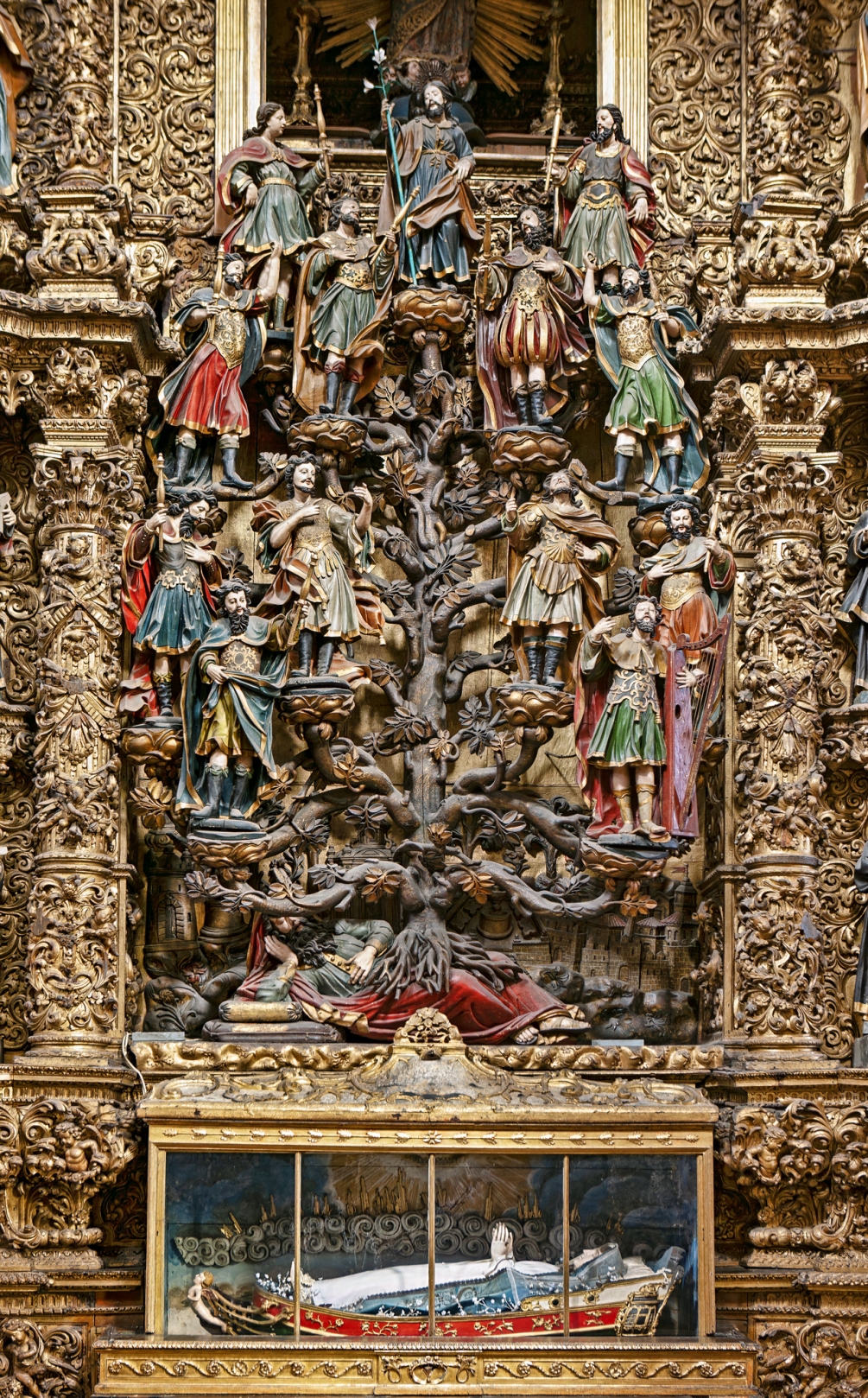
Igreja de S. Francisco do Porto
The city’s most important Gothic temple, whose construction began in the fourteenth century.
It is one of the most important works of the Baroque, by its gilded interior from the seventeenth and eighteenth centuries. It was the exuberance of its gild carved wood work that led Count Raczinsky to describe it as the “Church of Gold”. And, overwhelmed, he adds: “The gild of this church is so beautiful and rich that goes far beyond everything I have seen in Portugal and in the whole world”. It is worth of notice the Tree of Jesse, as well as the catacombs.
It is a National Monument since 1910 and World Cultural Heritage by UNESCO since 1996.
January, February, November and December: 9am-6pm
March, April, May, June and October: 9am-8pm
July, August and September: 9am-8pm
Cost
8 €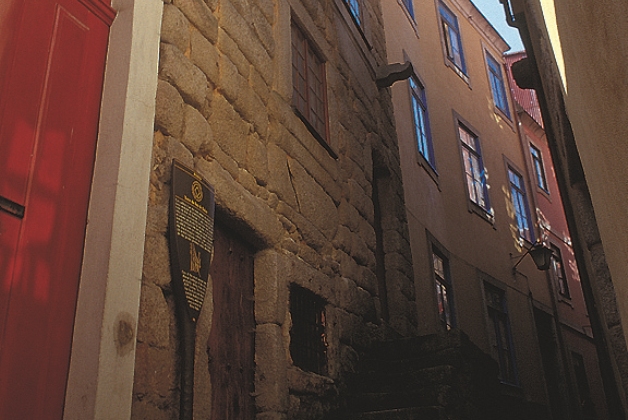
Barredo tower
Building No. 5 in the Rua de Baixo represents the oldest example of civil architecture from the medieval period to have survived in the Barredo neighbourhood. Its construction probably dates back to the 13th century.
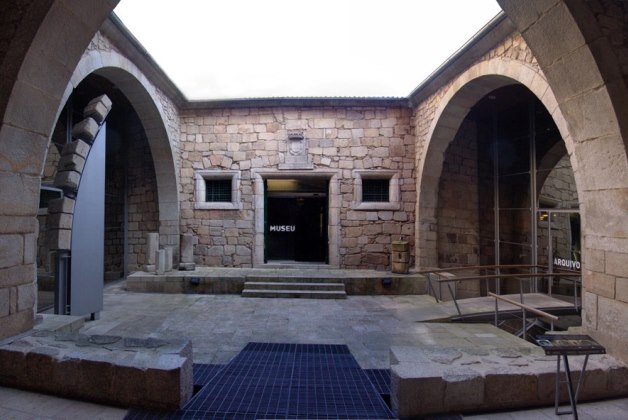
Casa do Infante
Casa do Infante, gained its name for being the birthplace of Henry the Navigator, is a complex of buildings that have been built to house the services of the Crown in Porto.
Its history dates back to 1325, when King Afonso IV ordered the construction of the royal 'Almazem', against the will of the Bishop, then lord of Burgo. The building underwent a process of rehabilitation and musealization and today it offers a wide range of services: Museum; Historical Municipal Archive; Porto’s Affairs Library; Memory Room; Exhibition Hall and Auditorium.
The museum includes a “Prince Henry the Navigator and the New Worlds” section where visitors can learn about the Prince by examining his iconography diachronically up until the present day and by revisiting the chief milestones in the Portuguese maritime discoveries, with a special focus on the role of the city and people of Porto. They can also learn about the Roman occupation from the 4th-5th century remains; the Alfândega Régia, or royal customs house, built by King Afonso IV in 1325; and the Casa da Moeda, or mint, which began operating in 1369.
Cost
4 €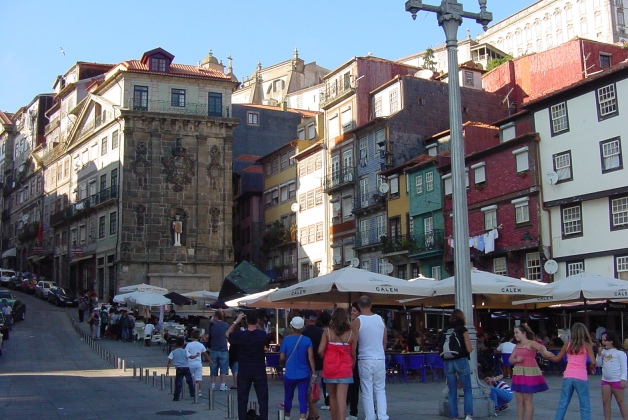
Praça da Ribeira
Cited already in 1389 as being of medieval origin, this square is thought to be one of the oldest in the city. A busy commercial centre, with tents serving as shops and a fish market, it came to the attention of João de Almada e Melo who set out to completely remodel the square in the 18th Century. The works carried out at this time by the Public Works Board, under the influence of John Whitehead, were financed by revenue from wine. Of his original plans, only the sides to the north, with its monumental Praça da Ribeira fountain, and the west were ever completed. The wall to the south was knocked down in 1821 and the medieval buildings along the east side survive to this day. Archaeological work in the 1980s led to the discovery of a 17th Century fountain. Reconstructed in its original location, it was crowned with a sculpture by José Rodrigues known popularly as the “Cube of the Ribeira”.
On the 24th of June 2000, a statute of St. John the Baptist by João Cutileiro was unveiled in a niche in the Praça da Ribeira fountain.
A must see, with lots of exciting nightlife on offer as well.
Included in the Urban Wine Route.
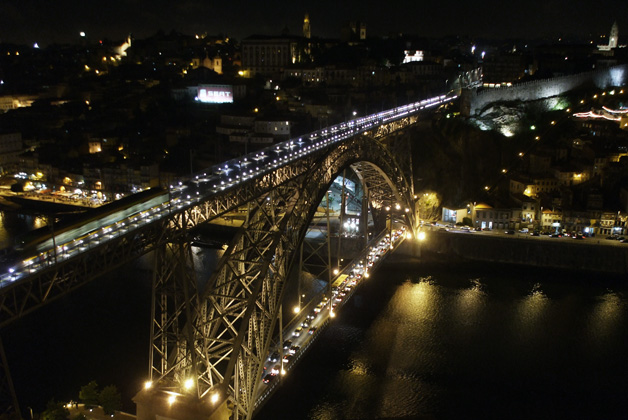
Luiz I Bridge
Designed by the engineer Théophile Seyrig, a disciple of Eiffel, it was inaugurated in 1886 and it is composed by two overlapping iron decks.
The bridge is 395 metres long and 8 metres wide, and its arch is considered, until 2017, the world’s biggest one in wrought iron.
Nowadays the upper deck is used by Greater Porto’s Metro, connecting the Cathedral’s area in Porto to Jardim do Morro and to Avenida da República in Vila Nova de Gaia.
Map View
Plan Your Trip
Arriving

Covered by an ever progressing, accomplished transport network, getting to Porto could never be easier whether it be by plane, bus, car, boat, train or metro.
Getting around

Travelling within the city is made simple should you go by public transport, your own car or a hired one.
Practical information

Here you will find some basic data on Porto as well as information on various public and private services available.
History

This is one of Europe's oldest tourist destinations. Its wealth of artistic heritage, Port Wine, open-air leisure spaces and cultural life are just some of the reasons to visit this city.
Everything you need to know


